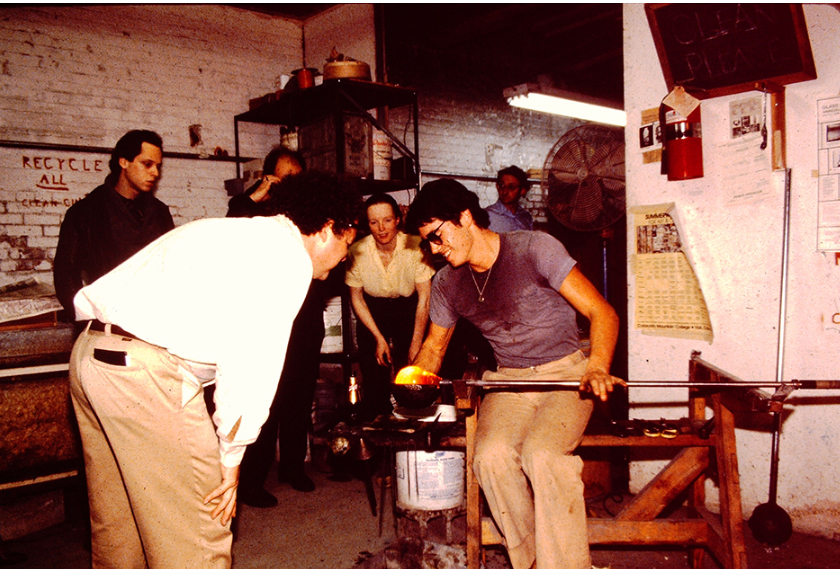The pioneering New York studio UrbanGlass — which celebrates its 40th anniversary this year — has served as an idea incubator and workshop for the likes of Robert Rauschenberg and Dale Chihuly. Today, it supports a thriving new generation of artists.
Finding studio space in New York City is difficult for many artists, but for glassblowers, the challenge is nearly insurmountable. They need a furnace that can heat the material to 2,000 degrees Fahrenheit, along with the requisite ventilation and safety systems. Building and maintaining such a studio can cost tens of thousands of dollars.
To address this need in the art community, there’s UrbanGlass, a Brooklyn nonprofit that has welcomed glass artists, as well as those simply curious about glass, since 1977. The studio is celebrating its 40th anniversary this year with a series of exhibitions and events, including a blowout birthday party on December 11.
“It’s harder to be an artist in New York City today than ever before,” observes executive director Cybele Maylone, “so our mission to support artists remains extremely relevant.”
The studio glass movement came into its own in the United States in the 1960s: Artists, outside industry, began adapting the material as a medium, and university art departments began adding glass programs. In 1977, young art-school graduates Erik Erikson, Richard Yelle and Joe Upham arrived in New York City and were frustrated to find that there was no glass studio where they could affordably rent space. So they founded the New York Experimental Glass Workshop, a scrappy artists’ collective, inside the Clayworks ceramics facility, at 4 Great Jones Street, in Manhattan’s Noho neighborhood.
A few years later, the group moved a bit south, to Mulberry Street, which at the time was ruled by the Gambino crime family. “At first, the mafia thought, ‘Who are these weird artists?’ ” observes Maylone. “But then, they learned that the artists were working in an Italian art form, inspired by master glassblowers of Venice, so they started fixing their parking tickets.”
Dale Chihuly and other maestros of the medium worked at the studio in the ’80s. A group called the B Team pioneered glass-based performance art by juggling and dancing with hot glass; Zesty Meyers and Evan Snyderman, cofounders of the design gallery R & Company, were members, along with artist Jeff Zimmerman. It also became a destination for artists in other fields, such as Robert Rauschenberg and Matthew Barney, who used the studio to create glass elements for their pieces.
Eventually, the workshop moved to Fort Greene — it’s now located next to the Brooklyn Academy of Music’s Harvey Theater — and changed its name to UrbanGlass. From 2011 to 2013, the studio underwent a $62 million renovation and expansion, becoming one of the largest glass facilities in the country, with 17,000 square feet of space. This was achieved with significant grants from the Bloomberg administration.
“We were recognized as a critical part of the artistic dialogue in New York,” Maylone says.
UrbanGlass now serves 350 artists each year through rentals, fellowships and residencies. It also houses an exhibition space and a shop, runs a robust education program and puts out the critical journal Glass: The UrbanGlass Art Quarterly.
Here, Introspective spotlights five innovative and accomplished glass artists who talk about their work and the role of UrbanGlass as an art incubator. Click to continue.



